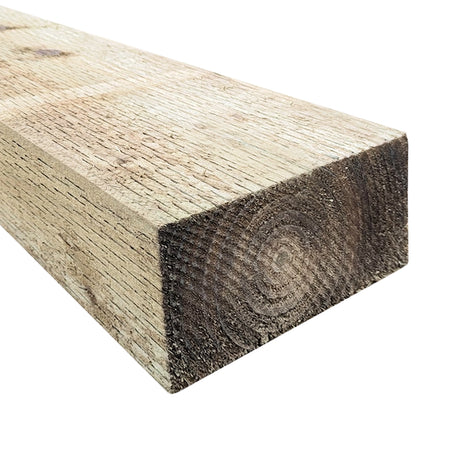Why Choose Our Timber Sleepers?
Our timber sleepers aren't just building materials – they're the foundation of your outdoor vision. Manufactured to rigorous UC4 standards, these pressure-treated sleepers are specifically engineered to withstand direct ground contact, making them perfect for demanding landscaping applications. The advanced treatment process penetrates deep into the timber, providing superior protection against decay, insect damage, and moisture – essential qualities for the British climate.
Available in both green and brown treated finishes, our 100x200mm x 2.4m sleepers offer the perfect balance of substantial presence and manageable installation. The incised surface treatment ensures maximum preservative penetration, extending the lifespan of your investment whilst maintaining the natural timber aesthetic that complements any garden design.
Versatile Applications for Every Project
Garden Landscaping: Create stunning raised planters that provide excellent drainage whilst adding architectural interest to your outdoor space. The robust dimensions make these sleepers ideal for multi-tiered garden designs and terracing on sloped terrain.
Retaining Solutions: Build reliable retaining walls that combine functionality with natural beauty. The substantial 100x200mm profile provides excellent structural integrity for slopes and level changes.
Pathway Edging: Define walkways and driveways with clean, professional lines that enhance your property's kerb appeal whilst providing practical boundaries.
Water Features: Construct pond edges, water garden borders, and decorative water features that blend seamlessly with natural surroundings.
Expert Quality You Can Trust
At DIY Building Supplies, we understand that successful landscaping projects depend on premium materials and expert guidance. Our timber sleepers are sourced exclusively from established UK manufacturers who share our commitment to quality and sustainability. Each sleeper undergoes rigorous quality control to ensure consistent dimensions, treatment quality, and structural integrity.
The UC4 treatment classification means these sleepers are designed for the most demanding applications, providing peace of mind that your investment will perform reliably for years to come. Unlike untreated alternatives that deteriorate rapidly in ground contact, our treated sleepers maintain their strength and appearance even in challenging conditions.
Professional Service, Competitive Prices
As your trusted building supplies partner, we're committed to providing not just exceptional products but also the expert advice you need to ensure project success. Our knowledgeable team understands the specific challenges of working with timber sleepers and can guide you through selection, quantity calculations, and installation best practices.
From our Nottingham base, we deliver quality timber sleepers across mainland UK, ensuring your materials arrive in perfect condition and ready for installation. Our competitive pricing reflects our commitment to value without compromising on quality – because your outdoor projects deserve nothing less than the best.
Ready to transform your outdoor space? Explore our carefully curated selection of timber sleepers and discover why discerning DIYers and trade professionals choose DIY Building Supplies for their most important projects. Your garden transformation starts with the right foundation; and that foundation is our premium timber sleepers.








